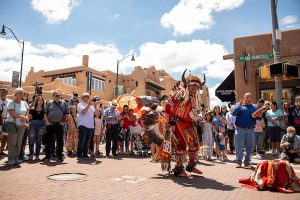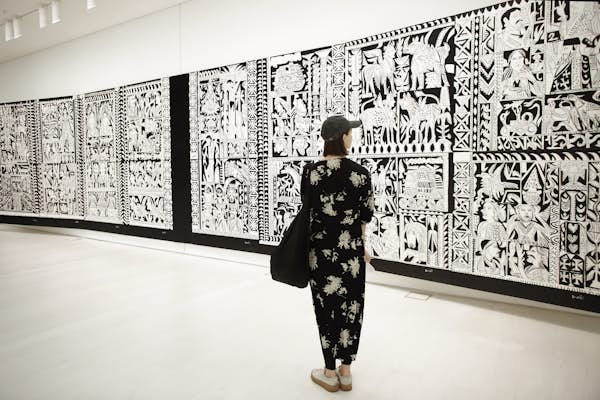
As the birthplace of modern Western civilization, sprawling Athens has enough neoclassical buildings to keep you busy for a week.
Go beyond the Parthenon, though, and you’ll discover a more youthful side to the city with new art galleries, languid café culture, and outdoor cinemas. The Athens of today offers way more than relics of antiquity and quick routes to the Greek Islands — though we wouldn’t cross those off the to-do list just yet.
Here are the 16 best things to do in Athens.
Squeeze every moment out of your next vacation with tips and tricks from Lonely Planet in our weekly newsletter delivered to your inbox.  We shouldn’t need to point this out, but don’t miss the Acropolis © Nadezhda1906 / Getty Images
We shouldn’t need to point this out, but don’t miss the Acropolis © Nadezhda1906 / Getty Images
1. Acropolis
The greatest symbol of the glory of Ancient Greece, the Acropolis rises spectacularly in the center of Athens. In the reign of Pericles, in the 5th century BC, the hilltop was deemed a religious sanctuary.
Just as pilgrims of millennia past made their way to worship here, you can ascend the marble steps on the west side to find yourself dwarfed by the towering columns of the magnificent Parthenon.
Detour: Complete your experience by seeing a concert or play at the Odeon of Herodes Atticus.
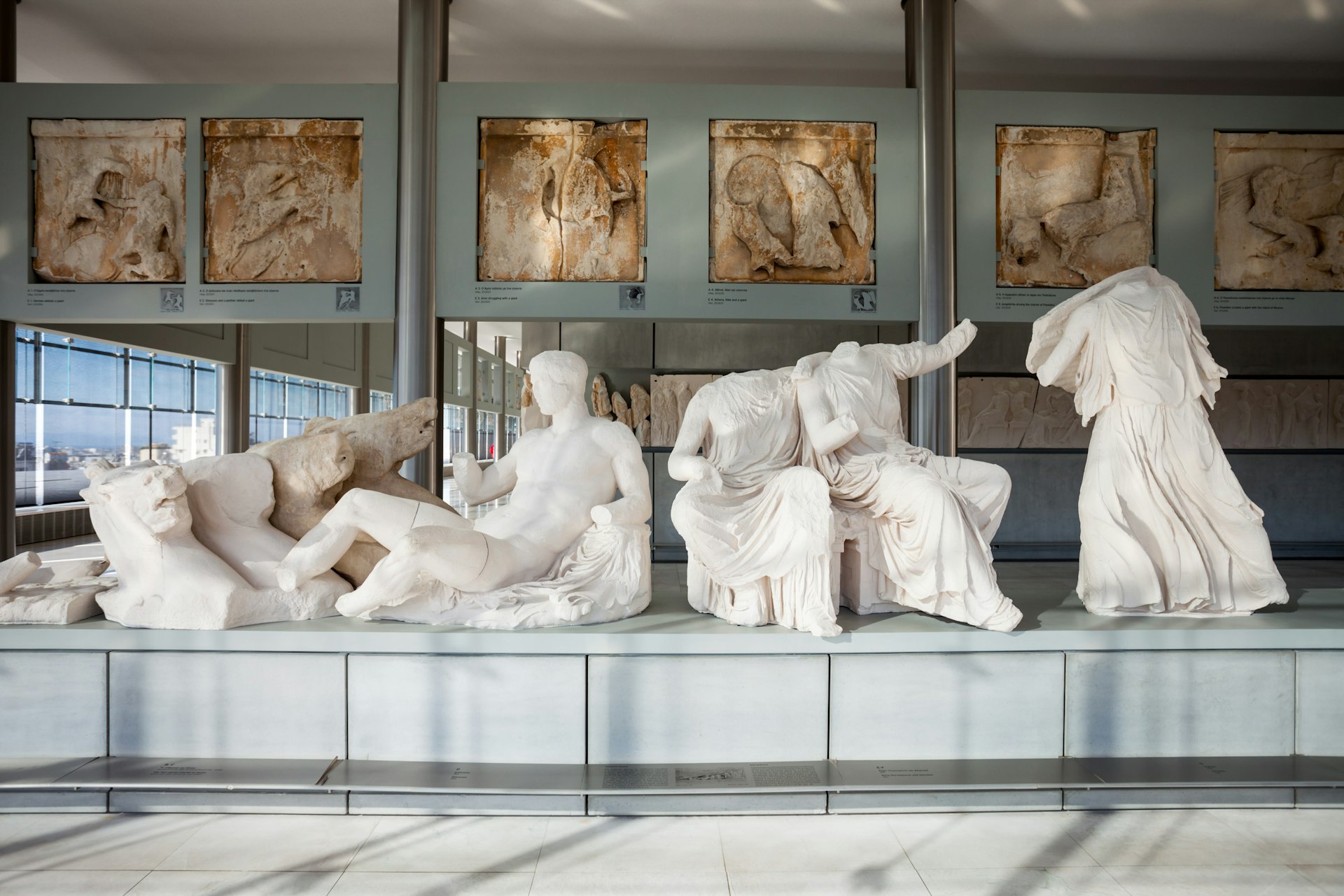 The Acropolis Museum in Athens is so great you might lose your head too ©saiko3p/Shutterstock
The Acropolis Museum in Athens is so great you might lose your head too ©saiko3p/Shutterstock
2. Acropolis Museum
Natural light cascades through the spacious galleries of the modern Acropolis Museum, illuminating the priceless treasures that have been removed from the hill and installed here for safekeeping.
The pinnacle of the museum is the top-floor glass atrium, where the 161m-long frieze from around the top of the Parthenon (minus the portion still held in the British Museum) is installed at eye level, so visitors can see all the details of this masterpiece in marble, and get a truer sense of its grand scale.
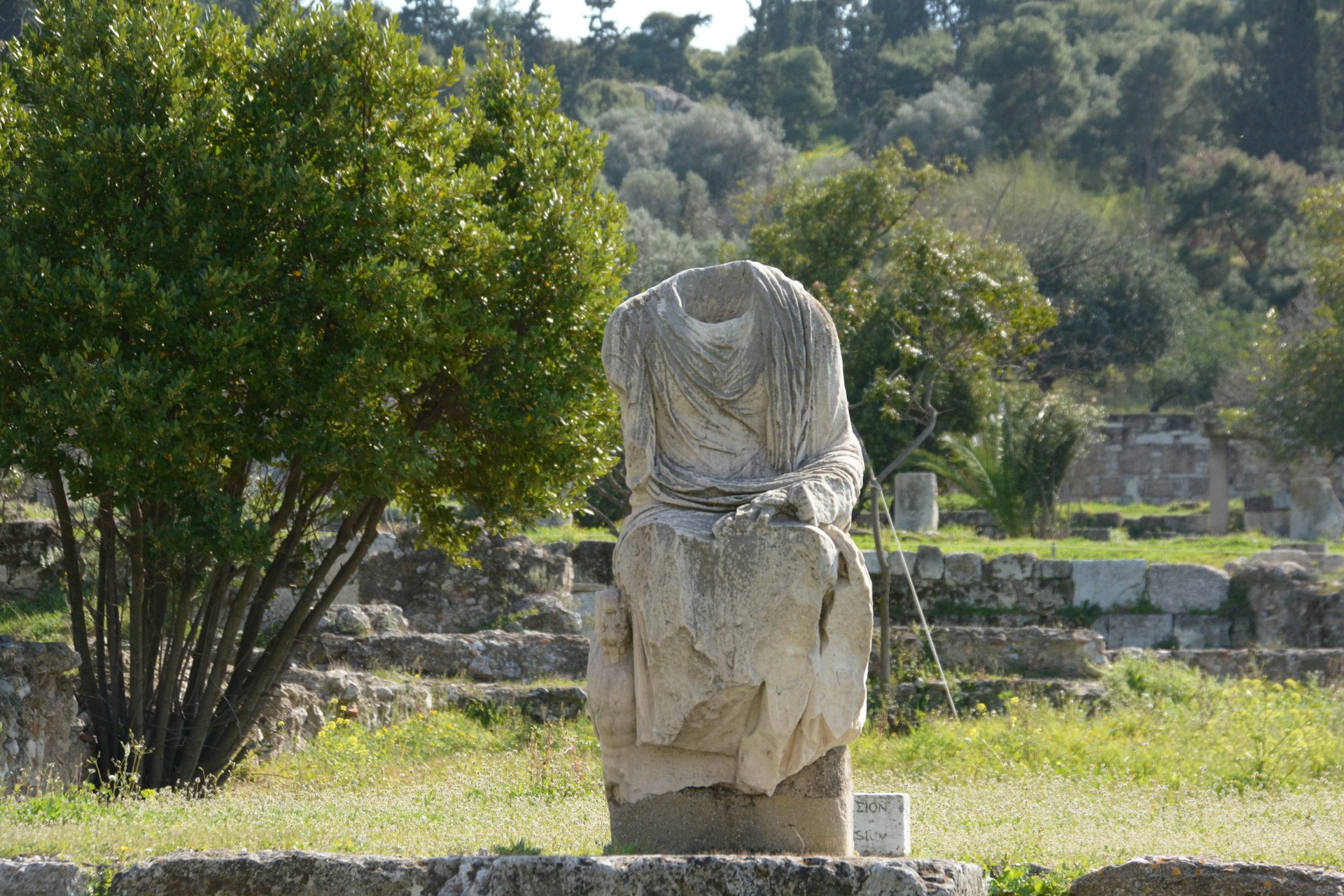 Some of the best thinkers of the age would have visited Ancient Agora in Athens ©Marissa Tejada/Lonely Planet
Some of the best thinkers of the age would have visited Ancient Agora in Athens ©Marissa Tejada/Lonely Planet
3. Ancient Agora
Follow in the footsteps of Socrates and his various political and philosophical cohorts at the Agora, the heart of ancient Athens’ civic life and the birthplace of democracy. In the stately Stoa of Attalos (an architectural paradigm for shopping arcades that you’ll recognize across modern Athens), the Agora Museum displays unusual finds from ancient daily life.
The Temple of Hephaistos is exquisite and very well preserved; see how many of the Labors of Hercules you can identify on the frieze.
 Visitors can be transported through millennia at the National Archaeological Museum © Shutterstock / Jenoche
Visitors can be transported through millennia at the National Archaeological Museum © Shutterstock / Jenoche
4. National Archaeological Museum
Athens’ preeminent museum houses the world’s largest and finest collection of Greek antiquities. Priceless items date from the Neolithic Era (6800 BC) to the Cycladic, Mycenaean, and Classical periods.
It’s gratifying to discover iconic sculptures of Western art history here, like the bronze figure of a bearded god and the disputed hammered gold death mask of Agamemnon, as you stroll through the galleries. Other surprises await, including frescoes from Santorini upstairs.
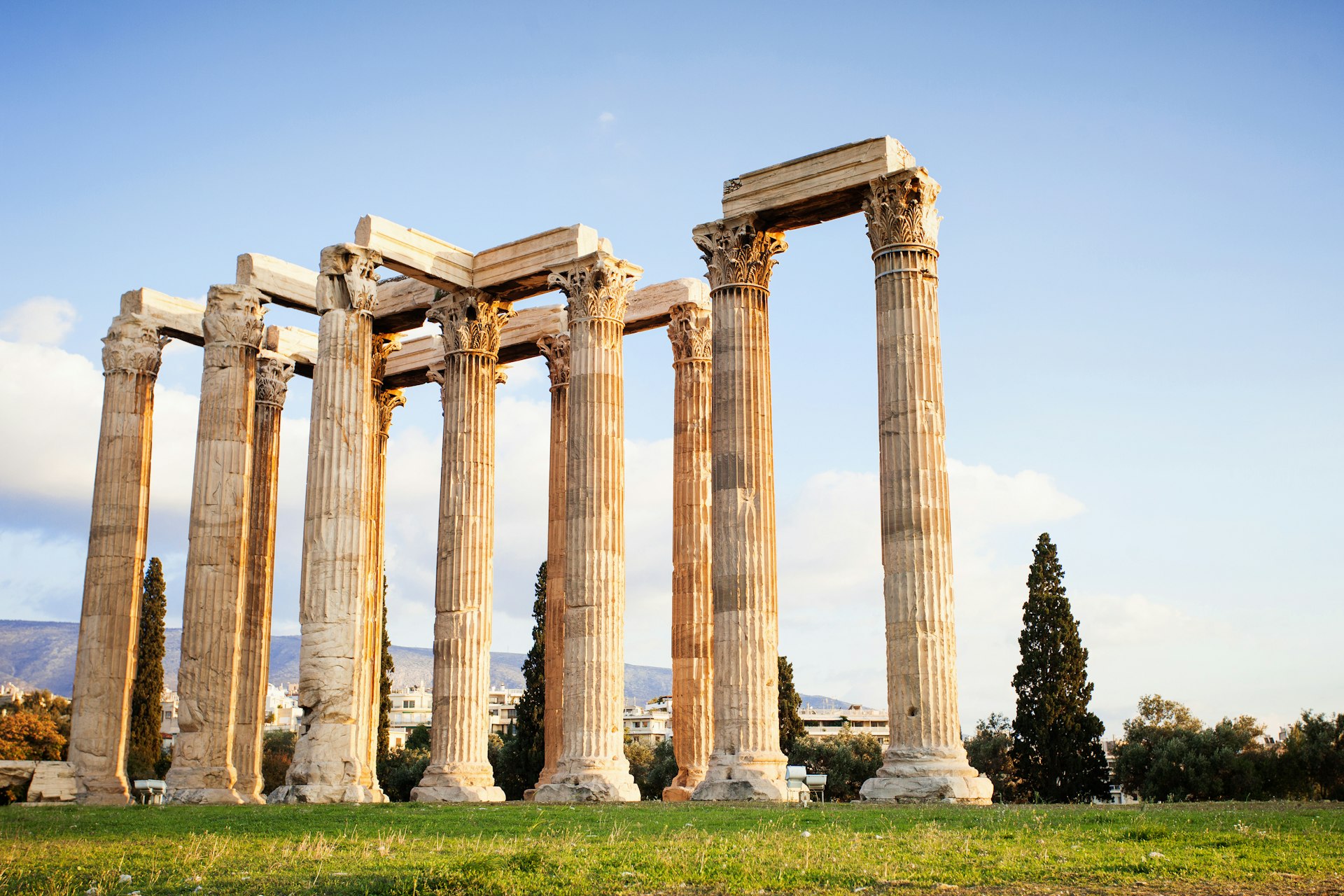 The Temple of Olympian Zeus took 700 years to build and is still a bit of a doer-upper ©Kite_rin/Shutterstock
The Temple of Olympian Zeus took 700 years to build and is still a bit of a doer-upper ©Kite_rin/Shutterstock
5. Temple of Olympian Zeus
Greece’s largest temple was seven centuries in the making. Or rather, what used to be Greece’s largest temple – today, only a handful of its colossal columns remain, as the rest were picked apart and reused in other buildings. The temple was dedicated to Zeus and, unofficially, to the Roman emperor Hadrian, who actually finished the construction job and erected a statue of himself.
While you’re here, note Hadrian’s Arch, congratulating him on his achievement. And explorers can seek out a sanctuary to Pan on the far side of this site.
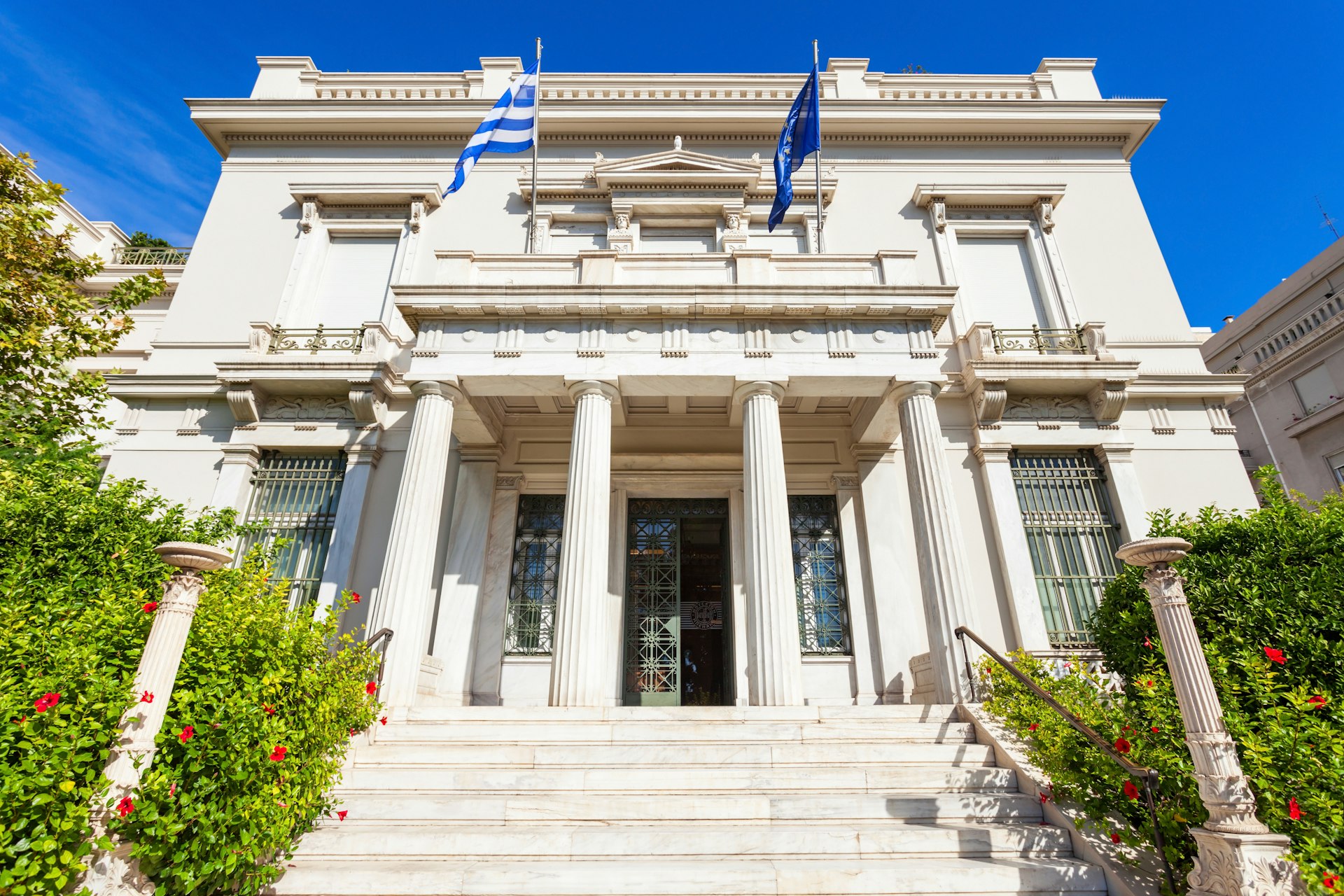 Even the Benaki Museum of Greek Culture building is worthy of being on display ©saiko3p/Shutterstock
Even the Benaki Museum of Greek Culture building is worthy of being on display ©saiko3p/Shutterstock
6. Benaki Museum of Greek Culture
If you have time for only one museum, make it this one. This impeccable private collection shows the spectrum of Greece from ancient times right up through the mid-20th century. It occupies a stunning neoclassical mansion, with fine art and mundane folk objects – both equally beautiful – displayed chronologically.
As a kind of counterpoint to the pure classicism celebrated elsewhere in the city’s archaeological sites, the Benaki collection tells the story of how Greece has absorbed foreign influences and ideas to create its uniquely syncretic culture.
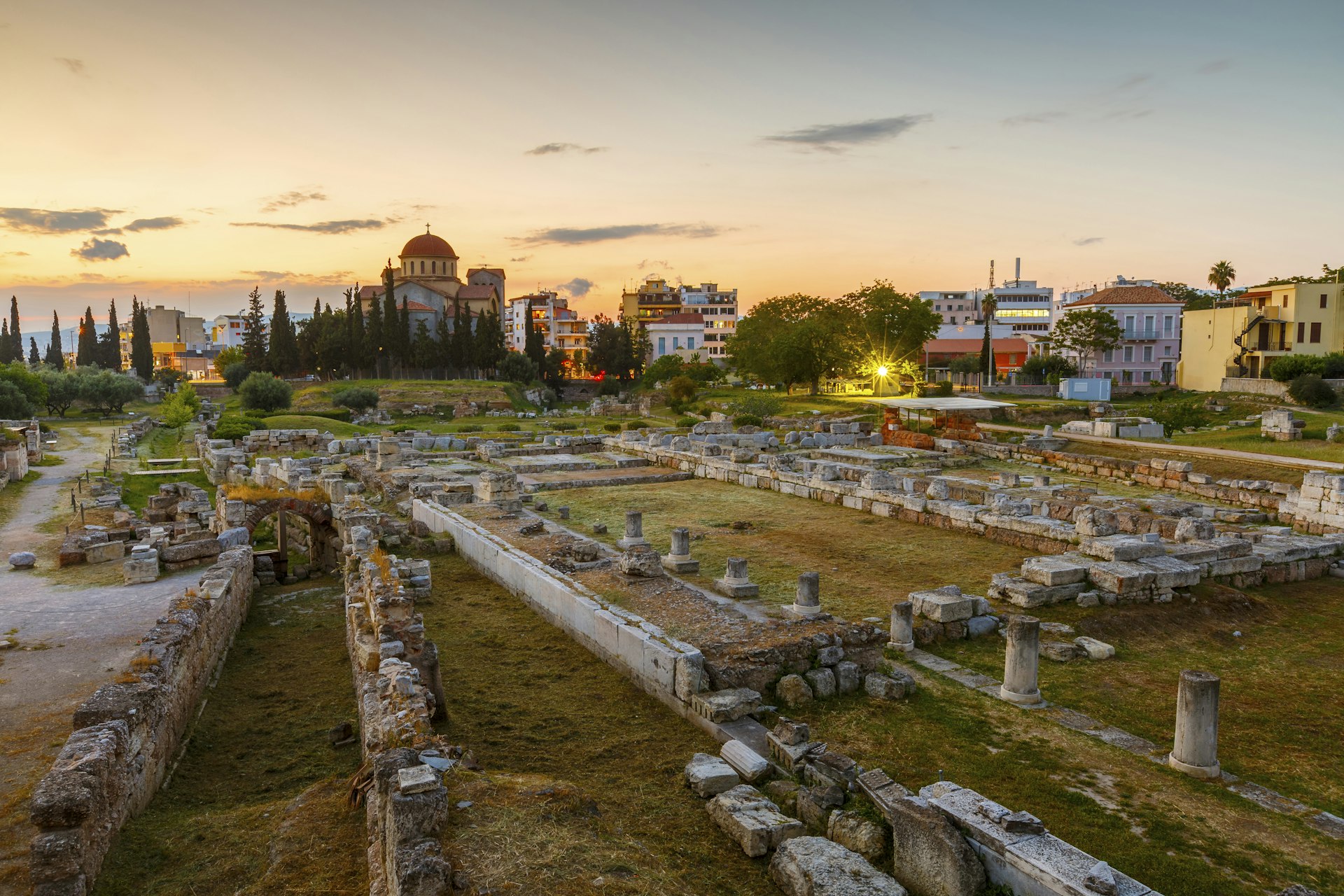 Kerameikos can be a bit of a graveyard, but that’s a good thing ©milangonda/Getty Images
Kerameikos can be a bit of a graveyard, but that’s a good thing ©milangonda/Getty Images
7. Kerameikos
The city’s ancient necropolis is home to the Street of Tombs, where classical VIPs were interred. Many of the finest grave markers are replicas; the originals are on display at the small, absorbing on-site museum.
The area was also the ceremonial entrance into ancient Athens, and while the gates no longer stand and the arriving road is now a paved city street, it’s still an interesting place to pause and imagine the activity that would’ve taken place here.
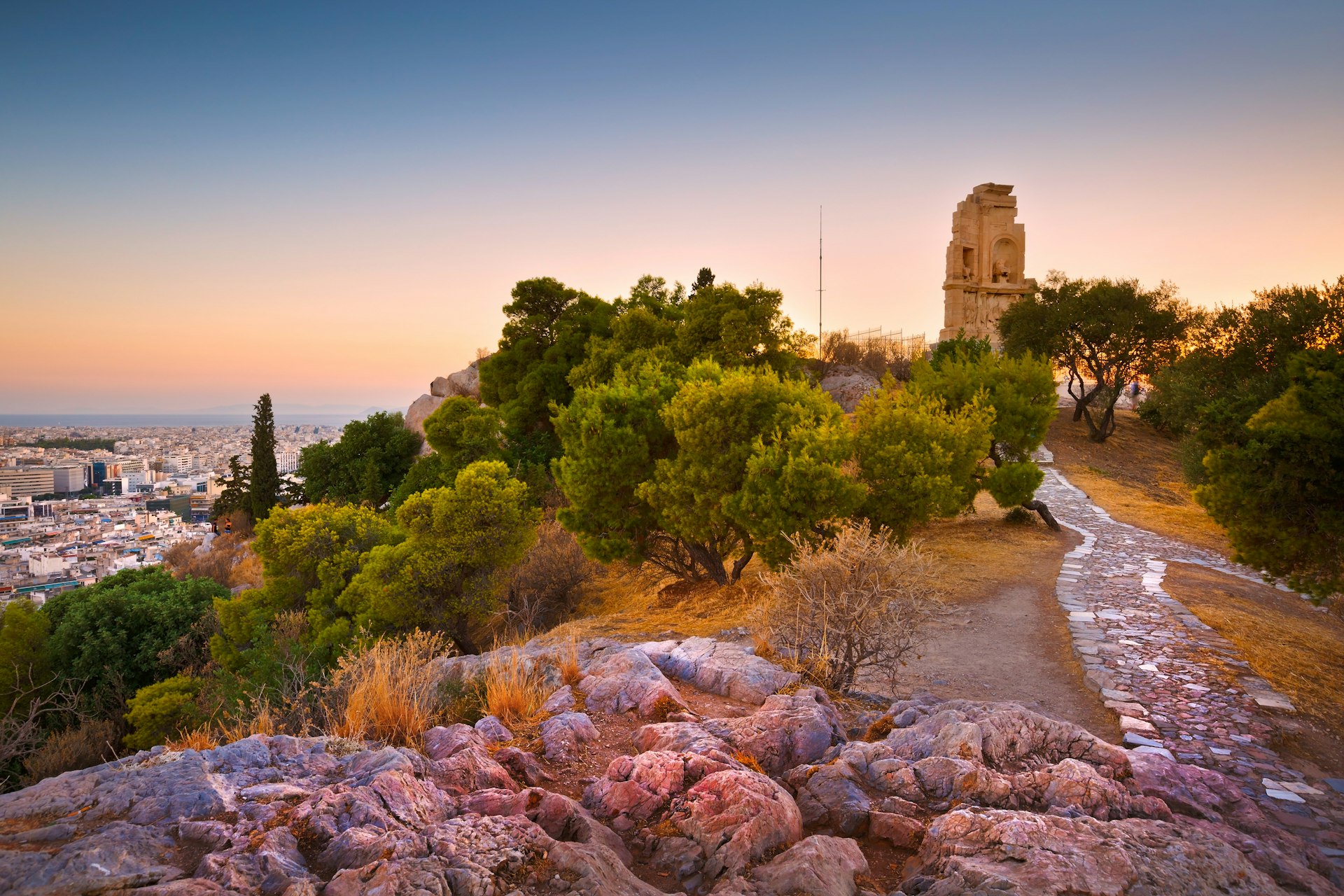 The Athens cityscape as seen from the top of Filopappou Hill ©Milan Gonda/Shutterstock
The Athens cityscape as seen from the top of Filopappou Hill ©Milan Gonda/Shutterstock
8. Filopappou Hill
The mythical battleground of Theseus and the Amazons is one of Athen’s best parks, studded with small ruins connected by beautiful stone paths that are themselves a minor architectural marvel. Make time in your schedule to come here around sundown one evening to watch the lights on the Acropolis switch on and glow gold against the blue sky. More prosaically, this is also where a lot of Athenians walk their dogs, so you’ll be out strolling with some great Greek pups.
Detour: To the north, the Hill of the Pnyx offers equally compelling views and is almost always empty.
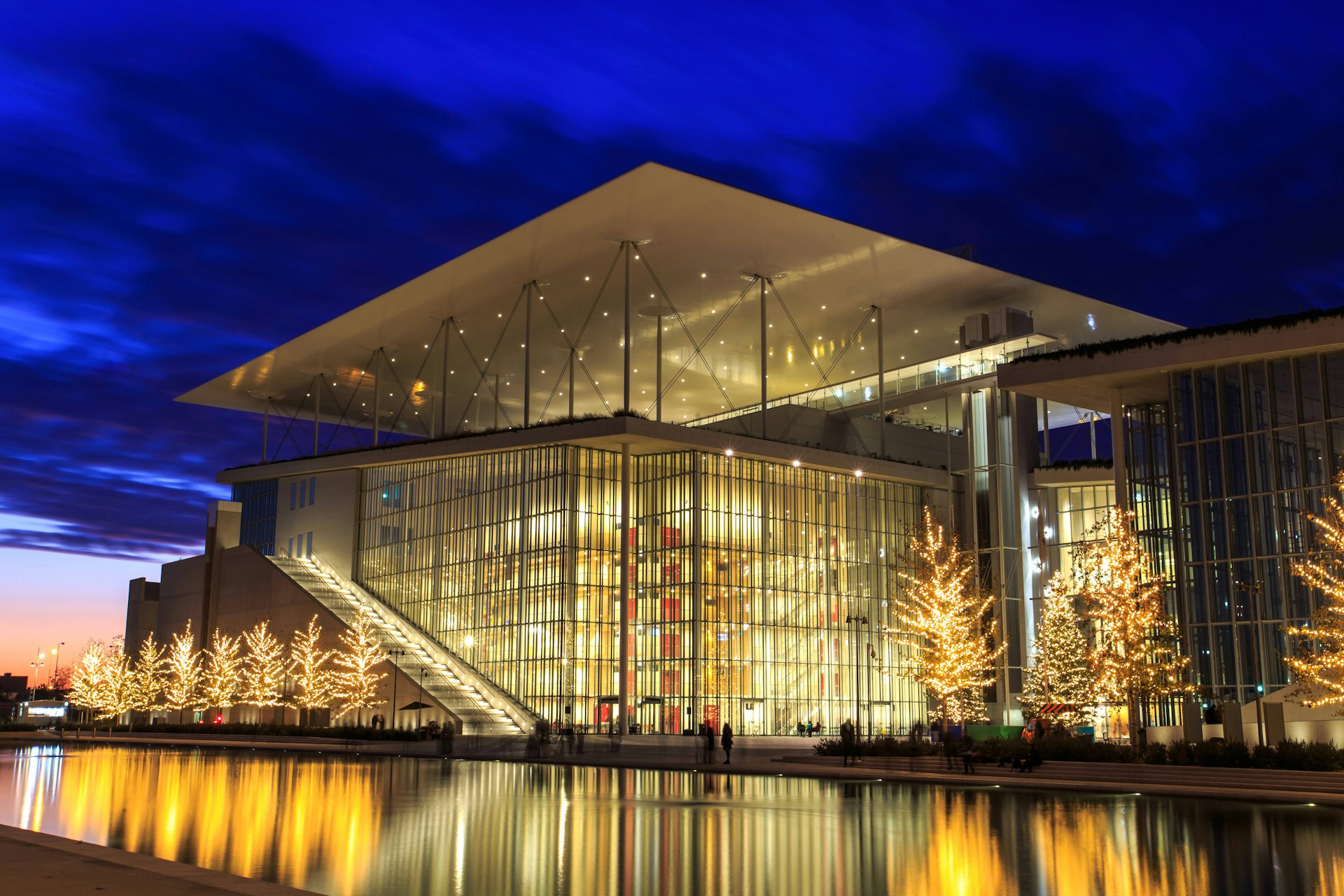 The lovely waterside location of Stavros Niarchos Foundation Cultural Center in Athens ©Giannis Katsaros/Alamy Stock Photo
The lovely waterside location of Stavros Niarchos Foundation Cultural Center in Athens ©Giannis Katsaros/Alamy Stock Photo
9. Stavros Niarchos Foundation Cultural Center
A contemporary Athenian wonder, the Stavros Niarchos Foundation Cultural Center, designed by Renzo Piano, is home to both the Greek National Opera and the main branch of the National Library.
Seeing a performance here will be a highlight of your trip, but there are plenty of free things to do and see as well, including meandering through the stunningly beautiful Stavros Niarchos Park. Designed to showcase Mediterranean flora, the gently sloping gardens are the perfect spot to relax and take in the views and cooling sea breezes.
10. Coffee culture
Athenians don’t wait until the weekend to head out to catch up with friends; they spend their days under the shade of orange trees nursing coffees and conversations for hours.
By day, the leafy central neighborhoods of Pangrati and Exarhia are packed with locals spilling out from kafeneions (Greek cafes) and into the streets, philosophizing (a favorite activity of any Greek), playing backgammon on marble table tops and sipping slowly on a cuppa.
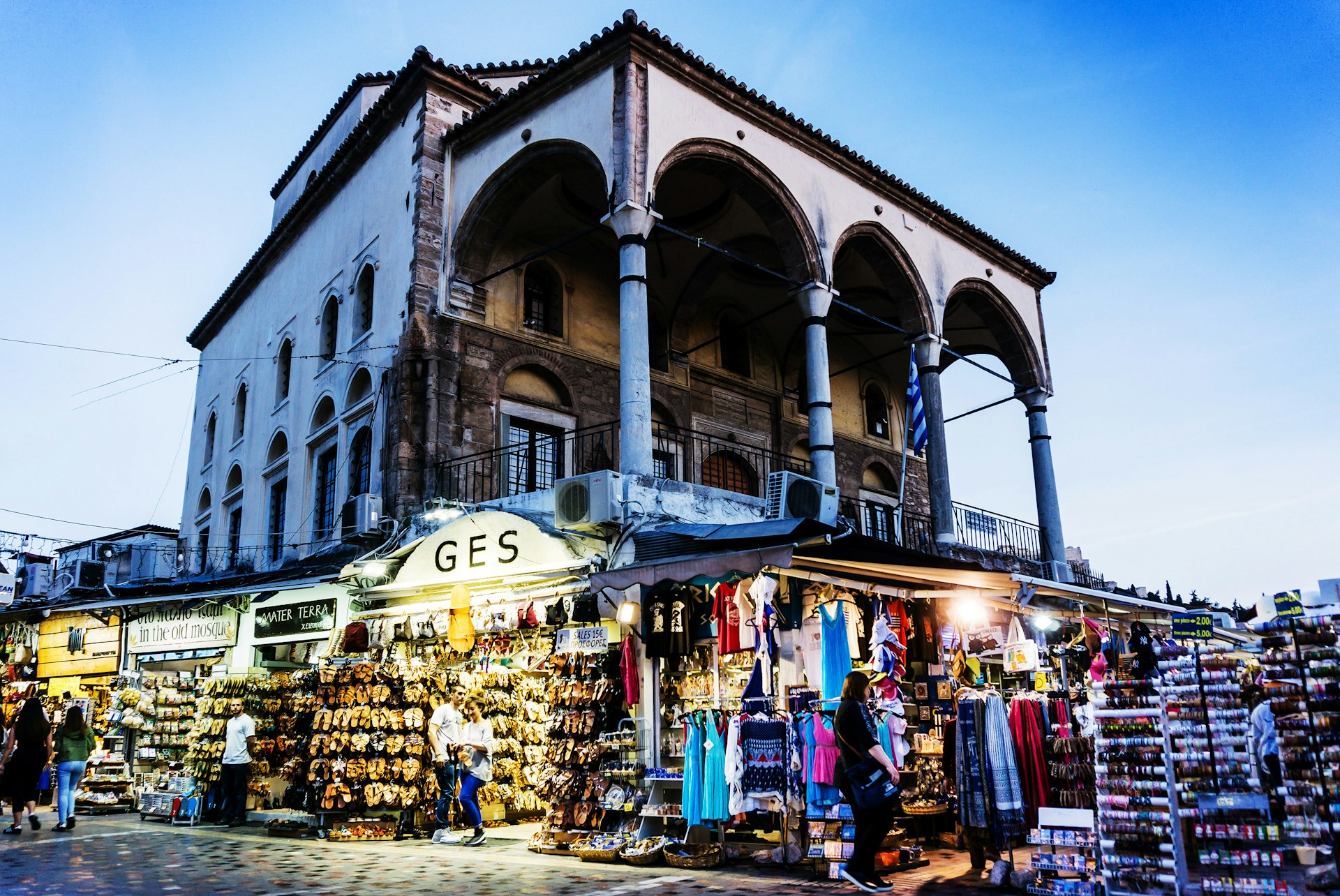 Find a unique gift at the Monastiraki Flea Market in Athens © ilolab / Shutterstock
Find a unique gift at the Monastiraki Flea Market in Athens © ilolab / Shutterstock
11. Monastiraki Flea Market
On Saturdays, central Athens throngs with shoppers looking for a bargain at the huge Monastiraki Flea Market, which takes place between the Monastiraki and Thisseio neighborhoods.
Here, traders open up their second-hand stores to flog a jumble of flea-market finds, vintage clothing and oddities ranging from vintage magazines punctuated with bold Greek lettering to mid-century furniture and strange bric-a-brac. Look hard enough, and you’ll find some buried treasure (and if not, some insight into how modern Greeks have furnished their homes for the past 60 years).
12. Check out the art scene
Athens is getting increasingly well-known for its art scene. From not-for-profit galleries like CheapArtAthens to well-established commercial galleries like The Breeder and the Goulandris Foundation, and the National Museum of Contemporary Art, which opened in 2020, the city’s creative side is thriving.
Add to that a flurry of international artists who have moved to the city and set up spaces like Kypseli Print Studio – a print screening studio which hosts workshops for people of all abilities – and Haus N, a creative hub for new installations and works by young Greek artists, and it’s easy to see the landscape changing for the better.
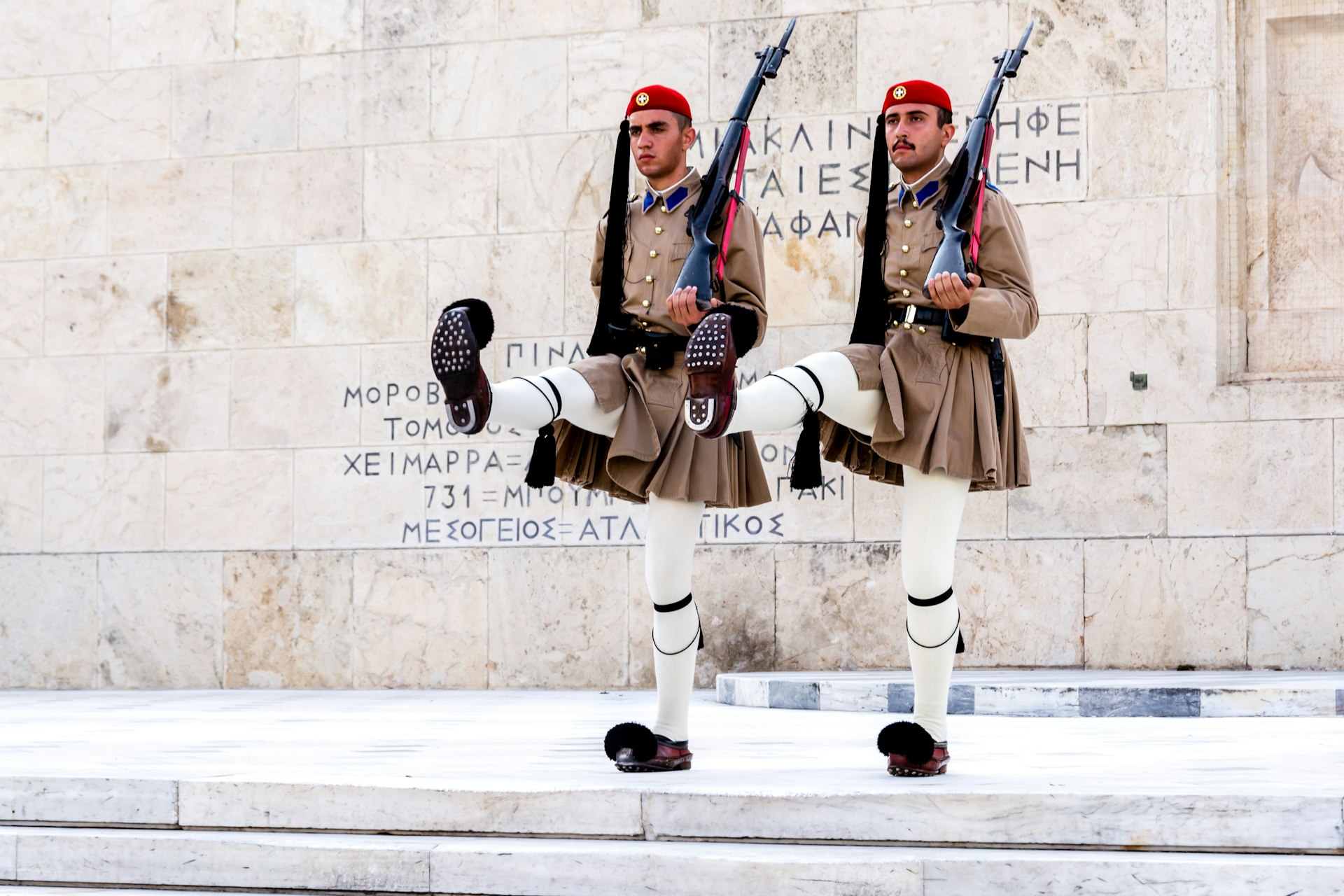 The ceremonial changing of the guards in Athens ©Dario Racane/Shutterstock
The ceremonial changing of the guards in Athens ©Dario Racane/Shutterstock
13. Syntagma Square
In the very heart of Athens stands the rose-toned Hellenic Parliament building on Syntagma Square. Try and catch its ceremonious changing of the guard. Two guards are always in residence here, dressed in traditional evzones costume, a tasseled fez hat, thick kilt and stockinged legs with pom-pom shoes.
In summer, the customary get-up gets so hot that these guards have to be dabbed at with tissues, as they are unable to move from their positions protecting the Tomb of the Unknown Soldier. It’s only on the hour that they can finally break free to move in perfectly choreographed synchronicity, kicking their legs high as they march to change guards.
14. Apollo Coast
Escaping the heat of the city is easy in Athens: just head to the beach. In the sweltering summer months, take the A1 tram to the Palaio Faliro neighborhood for a palm tree-lined promenade and a soft, sandy beach.
Further along, the Apollo Coast are the more upmarket southern suburbs of Glyfada and Vouliagmeni, with no shortage of luxury beach clubs should you want a full day off from sightseeing. Out of season, Vouliagmeni has a burgeoning surf scene.
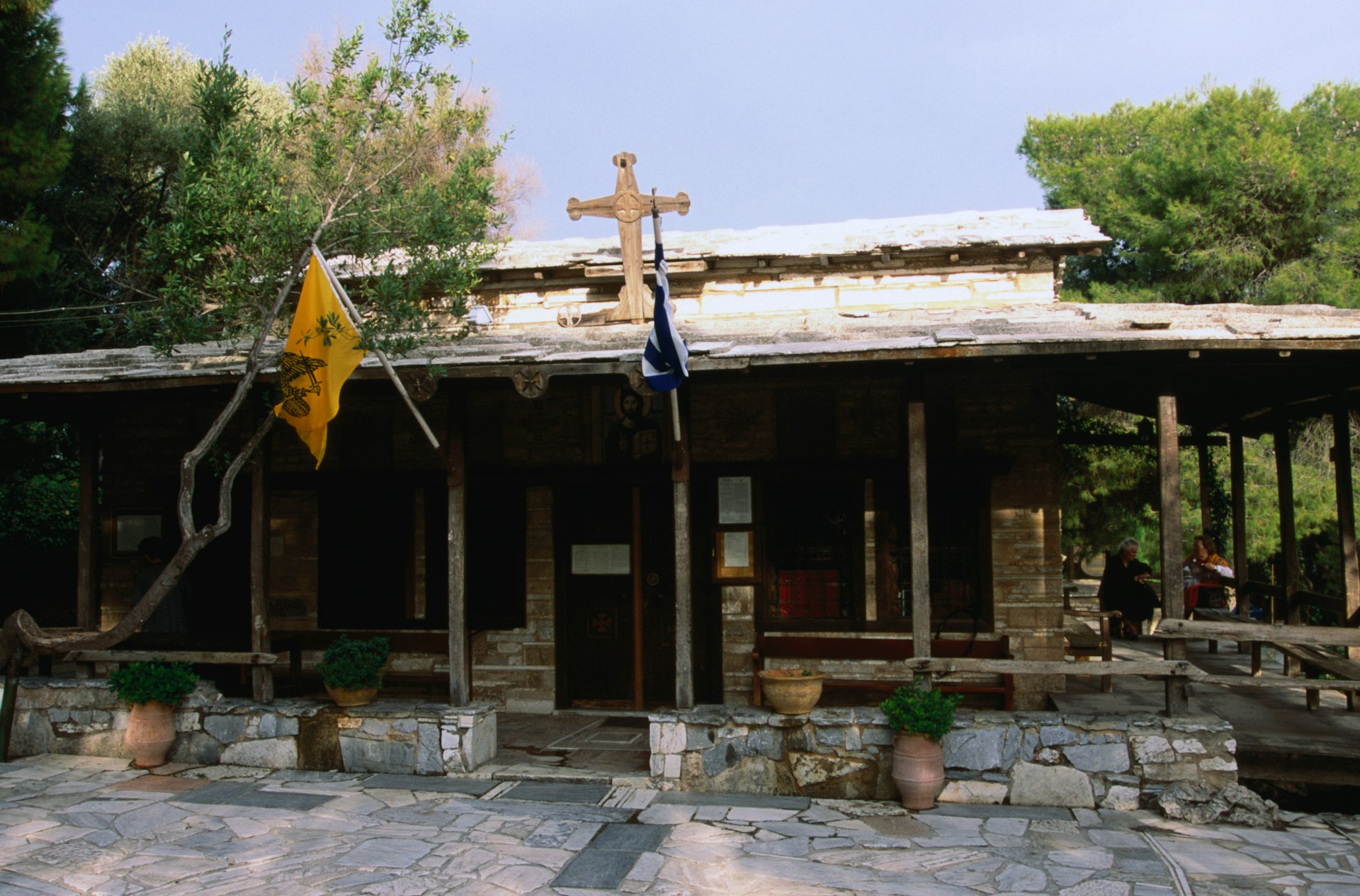 The remarkable 16th-century Church of Agios Dimitrios Loumbardiasis at the foot of Filopappou Hill ©Anders Blomqvist/Lonely Planet
The remarkable 16th-century Church of Agios Dimitrios Loumbardiasis at the foot of Filopappou Hill ©Anders Blomqvist/Lonely Planet
15. Church of Agios Dimitrios Loumbardiaris
At the foot of Filopappou Hill, this 16th-century church may not be the oldest in Athens, but it is certainly one of the loveliest, with a heavy timber roof, marble floors and the permanent scent of incense. A great 1732 fresco of St Dimitrios, astride his horse in a pose copied from ancient images of Alexander the Great, adorns the interior.
The churchyard, with its wooden gate and bells, conjures Japan – a touch by modernist architect Dimitris Pikionis who also applied his precise style to the restoration of the back exterior wall, a delightful piece of stonework. In 1648, the church was the site of a reported miracle. The Turks, ensconced on the Acropolis, prepared to fire a cannon on worshippers gathered in the church, but the gunner was killed by lightning, saving the congregation. Hence its name, Loumbardiaris (‘of the cannon’).
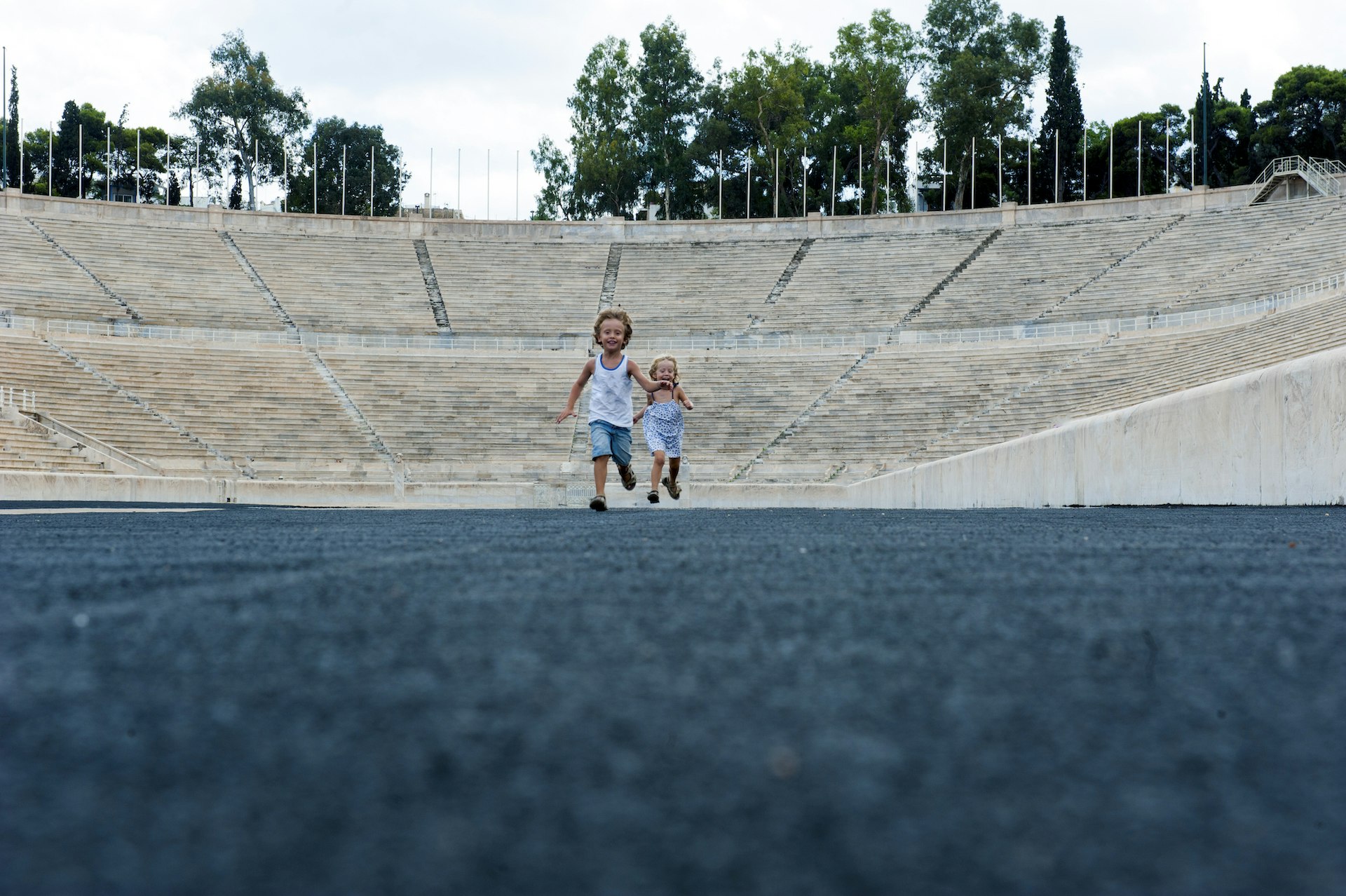 Test your own running skills at the Panathenaic Stadium © Fernando Vazquez Miras / Getty Images
Test your own running skills at the Panathenaic Stadium © Fernando Vazquez Miras / Getty Images
16. Panathenaic Stadium
With its rows of white Pentelic marble seats built into a ravine next to Ardettos Hill, this ancient-turned-modern stadium is a draw both for lovers of classical architecture and sports fans who can imagine the roar of the crowds from millennia past. A ticket gets you an audio tour, admission to a tiny exhibit on the modern Olympics (mainly eye-candy games posters) and the opportunity to take your photo on a winners’ pedestal.
The stadium – built in the 4th century BC and restored for the first modern Olympic games in 1896 – was first used as a venue for the Panathenaic athletic contests. It’s said that at Hadrian’s inauguration in AD 120, a thousand wild animals were sacrificed in the arena. Later, the seats were rebuilt in marble by Herodes Atticus.


